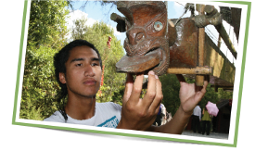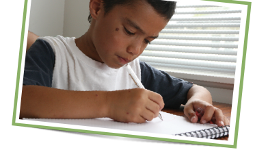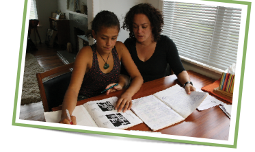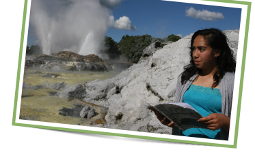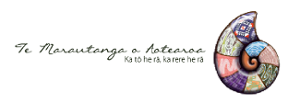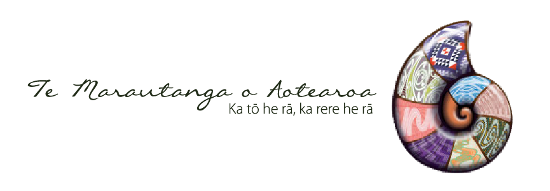I te wā ka pātai mai ngā whānau ana, he aha te huarahi e kōrero Māori ai au?, ana, i te nuinga ō ngā wā, ko taku whakautu nei, kia kaua e whakaaro atu mō te reo tonu, ka tae mai te reo ki roto i a rātou. Me rapu kē he aha ngā momo … ngā mea e hihiko ai te ngākau o ngā whānau. He aha ngā mea e rata mai ai ngā tamariki? He aha ngā mea e ngākaunuitia ai ngā whānau ki te mahi tahi. Koira ngā pātai tuatahi, kia mārama pai ai te whānau he aha tērā e korikori ai rātou, e manawanui ai rātou, kātahi ka mōhio rātou ki te huarahi e ora ai tō rātou reo. Ko te pātai tuarua he aha te huarahi e uru ai te reo Māori ki roto ki aua mahi. Nō reira ko te piringa o te whānau ehara i te mea ko te reo te mea kaha e piri ai tētahi whānau. Nōku anō ēnei whakaaro. Kāore anō kia kite i tētahi whānau kua piri mō te reo te take. I te nuinga ō ngā wā, tata ki te katoa ō ngā wā, ko te take e piri ai ngā whānau, ngā tāngata i roto i ngā hapori, kua piri i runga i ngā whakaaro, i ngā whāinga, ngā wawata kē atu i te reo pēnei i te whanaungatanga, pēnei i te mātauranga, pēnei i te hākinakina, pēnei i te kapa haka. Koia anō ko ngā mea e manawanui ai rātou. Ko te pātai nui, ko te wero nui, me pēhea e uru atu ai te reo Māori ki roto i aua kaupapa e manawanui ai rātou?
Koia anō ko ngā whānau i ēnei rā. Hāunga ko te whakapapa. Āe, ko te whakapapa te mea ka piri te tangata engari he nui anō ngā whānau whai whakapapa engari marara ana ki te ao. Ko te whānau whai whakapapa engari whai kaupapa mā ētahi, koia anō ko tētahi whānau kua piri pūmau rātou ki a rātou. He pērā anō ko ētahi tangata, ētahi whānau iti nei ka piri ngātahi atu me ētahi atu … ko wai ka kī atu ehara tērā i te whānau? He whānau tonu tērā. Ahakoa kāre he whakapapa o tērā, o tērā, kāo, ko te kaupapa kē e piri ai rātou, ka manawanui rātou, ka hihiko rātou, ka whai wawata ai rātou. Koia anō ko te oranga o te reo, o te tikanga, o taua whānau tonu ki ngā tau kei mua i te aroaro. He take anō tērā, he nui ngā mea e pātai mai ana. Ko te tangata i tipu i roto i te reo Māori, nō hea mai tērā reo Pākehā? Me te pai o te reo Pākehā nei pea e puta ana ahakoa kāore anō ia kia ako i te reo Pākehā i roto i te kura pea. Tērā anō pea i ako i te kura ēngari mō te pai o te reo Pākehā. He tohu nui tērā mō te koi o te hinengaro o te tangata e kapo nei i te reo.
Ko te hinengaro o te tangata pēnei he rorohiko kapo reo. Koirā te tino mahi nei o te hinengaro o te tangata. No reira kia mau i te tamaiti te reo Māori nei, kua āhua mārama ia ki ngā nekenekehanga ō te kupu. Ko tērā momo raweke i te kupu Pākehā, i te rerenga Pākehā, te tirohanga rerekē. Koirā te mea e reka ana, e ataahua ana te rere o ngā kupu Pākehā. Nā runga i te koi o te hinengaro o te tamaiti i ako i te reo Māori engari i mārama ki tētahi tirohanga kē, ki reo kē. Koia anō ko te oranga o te reo, o te tikanga, o taua whānau tonu ki ngā tau kei mua i te aroaro. E mōhio ana he nui ngā momo kura i roto i Aotearoa nei, he rerekē ngā whāinga, he rerekē ngā kaimahi, ngā whānau. Nō reira he uaua te kī me pēnei te āhua o te kura nā te mea ka kōrero pērā kāore e kore ka kite i ētahi atu kura kāre i te pērā. Engari ko tētahi o ngā tino whakaaro pea hei whakaaro atu mā tātou i a tātou e kōrero ana mō ngā kura: he aha tērā mea e kōkiri whakamua ana rātou? Ko te tohutohu o te kāwanatanga, ko te marautanga e whai utu ai rātou, e whai hereni ai rātou, e whai mahi ai ngā kaimahi?
E mārama ana he uaua te whakahaere i te kura ki te kore aua mea te hereni. Engari ko te mea e pūmau ai rātou ki ngā tino whāinga o taua kura ko ērā mea i tua atu i ērā whāinga o te kāwanatanga. Arā, ko ngā mea ā-iwi, ngā mea ā-takiwā, ko te whakapiki i te mana o taua hapori e piri tahi ana ki taua kura. Koia anō ko te kura tūturu pea e ora atu ai te reo Māori. Hāunga anō ko ngā kura pai te rumaki, pai te tō mai i te tangata, ehara i te whakahē ana ērā kura, engari ko te āwangawanga nei he aha te huarahi e piri tonu ai ērā whānau ka puta ngā tamariki. Ka marara ērā o ngā mātua, ērā o ngā whānau, ka kuhu mai.. He pēnei i tētahi kiore i runga i te wīra e takahurihuri ana. Ia tau, ia tau ka kuhu mai ngā whānau, waihanga anō tērā manawa nei i roto i a rātou ka puta. Engari i ētahi anō o ngā kura ka noho ā-hapori, ka noho whakatipuranga, ka noho ā-whakapapa ki roto i taua takiwā. Ka kite atu pea te oranga roa nei i roto i tēnei kaupapa o te kura rumaki.
